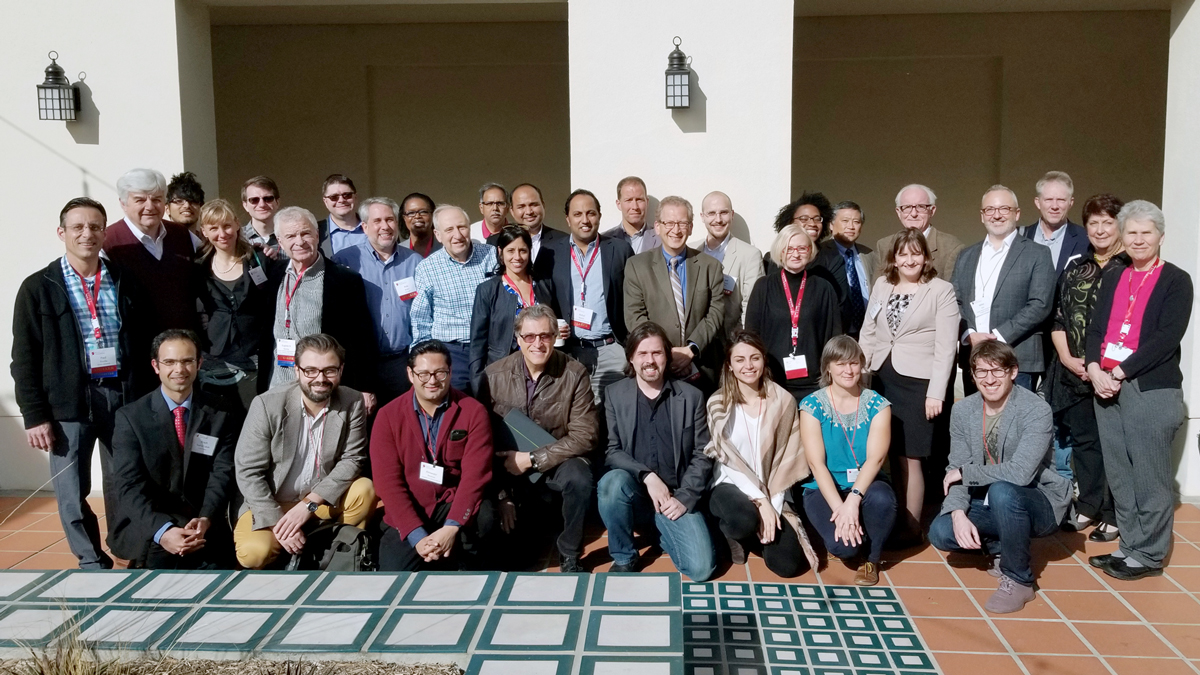Workshops
Modeling and Visualizing Science and Technology Developments
Date
December 4-5, 2017
Meeting Place
Beckman Center
100 Academy
Irvine, California 92617
USA
Meeting Place
This colloquium brings together researchers and practitioners from multiple disciplines to present, discuss, and advance computational models and visualizations of science and technology (S&T).
View more details on the Sackler Colloquia website.
Extended versions of the best presentations from the Sackler / NAS colloquium were published in a special issue on “Modeling and Visualizing Science and Technology Developments” in the Proceedings of the National Academies of Science (2018), available at https://www.pnas.org/modeling.
Organized By
Katy Börner, Victor H. Yngve Distinguished Professor of Information
Science and Engineering
Indiana University
USA
William Rouse, Professor Emeritus
Georgia Institute of Tech
USA
H. Eugene Stanley, William Fairfield Warren Distinguished Professor
Boston University
USA
Paul Trunfio, Senior Research Scientist
Boston University
USA
Description
This colloquium brings together researchers and practitioners from multiple disciplines to present, discuss, and advance computational models and visualizations of science and technology (S&T). Existing computational models are being applied by academia, government, and industry to explore questions such as: What jobs will exist in ten years and what career paths lead to success? Which types of institutions will likely be most innovative in the future? How will the higher education cost bubble burst affect these institutions? What funding strategies have the highest return on investment? How will changing demographics, alternative economic growth trajectories, and relationships among nations impact answers to these and other questions? Large‐scale datasets (e.g., publications, patents, funding, clinical trials, stock market, social media data) can now be utilized to simulate the structure and evolution of S&T. Advances in computational power have created the possibility of implementing scalable, empirically validated computational models. However, because the databases are massive and multidimensional, both the data and the models tend to exceed human comprehension. How can advances in data visualizations be effectively employed to communicate the data, the models, and the model results to diverse stakeholder groups? Who will be the users of next generation models and visualizations and what decisions will they be addressing.
Schedule:
Monday, December 4, 2017
| 7:30am - 11:50am | Session I: Rankings and the Efficiency of Institutions Organizer: H. Eugene (Gene) Stanley
|
| 1:00pm - 5:30pm | Session II: Higher Education and the S&T Job Market Organizer: Katy Börner
|
Tuesday, December 5, 2017
| 7:00am - 12:00pm | Session III: Innovation Diffusion and Technology Adoption Organizer: William Rouse
|
| 1:00pm - 4:30pm | Session IV: Modeling Needs, Infrastructures, Standards Organizer: Paul Trunfio
|






